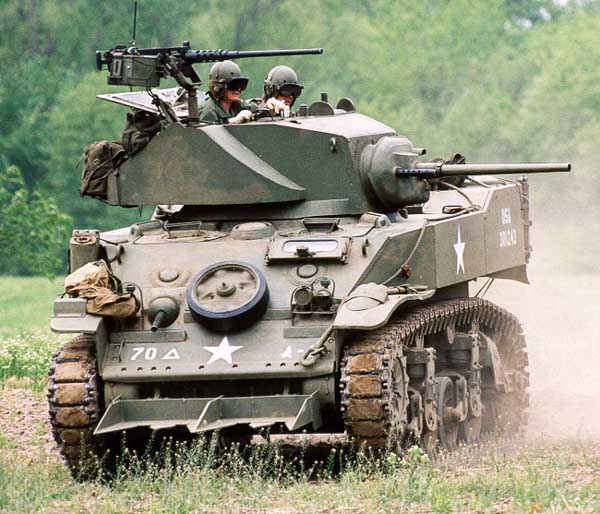THE CULIN HEDGEROW CUTTER
Shortly after the Normandy landings in 1944, Allied armored units encountered hedgerows in the countryside
that had developed over several centuries. The farmers would uncover stones in their fields and would pile them up along
property lines. This evolved into a stone mound with thick hedges growing along this natural fence line. When Allied tanks
attempted to cross the hedgerows in pursuit of the Wehrmacht, the vulnerable belly armor was exposed and several vehicles
were knocked out. A U.S. Army soldier came up with a solution that bears his name, the Culin hedgerow cutter. Steel in the form
of sharp spikes was fitted to the front of armored

U.S. Army Photo
vehicles as shown in the above photo. This would allow the tanks to plow through the hedgerows, being protected by the frontal armor.
Troops would then follow through the openings in the hedgerows to support the armor. It should be noted that the material used
to make the Culin hedgerow cutter was obtained from the German beach obstacles at Normandy.
Shown below is a steel fabrication of the cutter design shown in the U.S. Army photo. The assembly bolts into the front clevice
fitting of the M5A light tank, as shown in the bottom photo.


Fabrication of Culin hedgerow cutter for WWII reenactments

M5 with Culin device in action at Lowell, Indiana



